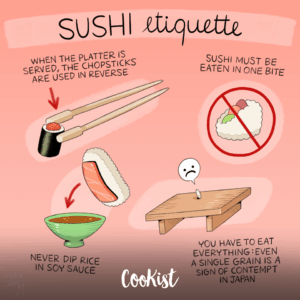This comprehensive guide, brought to you by the expert anglers at FishingForFun.Blog, will delve into the art of creating your own false worm baits. We’ll explore various materials, techniques, and strategies to help you design lures that will attract and fool even the most discerning fish. Forget expensive store-bought lures – learn to craft your own masterpieces and save money while boosting your fishing success!
Understanding the Appeal of Worm Baits
Before diving into the crafting process, let’s understand why worm baits are so effective. Their natural, wriggling motion mimics the movements of real earthworms, a primary food source for many fish species. This lifelike action triggers their predatory instincts, leading to more strikes and ultimately, bigger catches. The versatility of worm baits is also key; they can be fished in various ways and adapted to different water conditions.
Choosing Your Materials: A Foundation for Success
The success of your false worm bait hinges on the quality of your materials. Experimentation is key, but here’s a breakdown of common and effective choices:
- Plastics: Soft plastics like silicone, PVC, and plastic foam are popular choices. Silicone offers excellent flexibility and durability, mimicking the texture of a real worm effectively. PVC can be more rigid, providing a different action. Plastic foam can be lightweight, ideal for surface lures.
- Rubber: Rubber, particularly latex, offers good elasticity and can be easily molded into worm shapes. However, it might not be as durable as plastics in prolonged use.
- Synthetic Compounds: There are specialized synthetic compounds designed specifically for lure making, offering unique properties like enhanced durability, UV resistance, or specific scents.
- Colorants: Choosing the right color is crucial. Natural earthworm colors like brown, black, red, and combinations thereof are generally effective. However, consider the water clarity and the type of fish you’re targeting. Experiment with different shades and combinations to find what works best in your fishing spots.
- Scent Additives: Adding scent to your baits can significantly enhance their attractiveness. Consider using commercially available fish attractants or natural scents like anise oil, garlic, or even vanilla extract. Remember to test different scents to determine what works best in your area.
- Weights: Depending on the type of fishing and water depth, you’ll need to add weights to your bait. Small lead weights, tungsten weights, or even beads can be incorporated during the creation process to achieve the desired sink rate.
- Hooks: Select hooks that are appropriate for the size and type of bait you’re making. Offset worm hooks are particularly well-suited for false worms, preventing snags and ensuring a secure hold.
Crafting Techniques: From Simple to Advanced
The method of crafting your false worm baits will depend on your skill level and the materials you’ve selected. Let’s explore a few popular techniques:
- Molding: This involves creating a mold (using silicone, plaster, or other materials) of your desired worm shape and pouring your chosen material into it. This method allows for precise replication and mass production, but requires initial investment in mold-making.
- Hand-Sculpting: For those who prefer a more hands-on approach, sculpting the worm from soft plastics or clay is an option. This method offers greater flexibility in design but requires more skill and patience. You’ll need to refine the shape and ensure consistency across multiple baits.
- Cutting and Shaping: Some materials can be easily cut and shaped using simple tools like scissors or knives. This method is suitable for simpler designs and requires less investment in tools or materials.
- Combining Techniques: For more complex designs, you can combine different techniques. For example, you could create a basic shape through molding and then refine it by hand-sculpting.
Step-by-Step Guide to Creating a Simple False Worm Bait
Let’s walk through the process of creating a simple, effective false worm bait using soft plastic and a simple mold.
- Acquire Materials: Gather your soft plastic material, a simple worm-shaped mold (easily found online or created using household materials), and a suitable hook.
- Prepare the Mold: Ensure the mold is clean and dry. Lightly lubricate it with a mold release agent to prevent sticking.
- Pour the Plastic: Carefully pour the melted or softened plastic into the mold, ensuring it fills all cavities completely.
- Cool and Cure: Allow the plastic to cool and cure completely according to the manufacturer’s instructions. This ensures a firm and durable bait.
- Remove from Mold: Gently remove the cured bait from the mold. Some molds require twisting or pulling to release the bait.
- Insert the Hook: Carefully insert the hook into the bait, ensuring a secure and balanced placement.
- Add Scent (Optional): Apply a scent additive if desired. Allow it to absorb fully.
Advanced Techniques and Considerations
Once you’ve mastered the basics, you can explore more advanced techniques to refine your bait design and enhance its effectiveness:
- Salt Impregnation: Adding salt to the plastic mixture can enhance its buoyancy and action in the water.
- Ribbing and Texturing: Creating ribs or textures on the bait’s surface can enhance its realism and attract fish.
- Adding Eyes: Adding small, realistic eyes can significantly improve the bait’s visual appeal.
- Color Blending: Combining multiple colors to create a more natural appearance can significantly enhance the lure’s attractiveness.
- Action Enhancement: Experimenting with different weights and shapes can change the bait’s action in the water, affecting its appeal to fish.
- Experimentation with Materials: Exploring different materials and combinations can lead to unique and highly effective baits. The possibilities are endless.
Fishing with Your Homemade False Worm Baits
The effectiveness of your homemade baits depends largely on how you present them. Here are some tips for fishing with your creations:
- Choose the Right Location: Consider the type of fish you are targeting and the environment they inhabit. Different baits and techniques are appropriate for different conditions.
- Retrieve Techniques: Experiment with various retrieve speeds and styles to determine what works best. Slow, deliberate retrieves are often effective, while faster retrieves can be used to trigger strikes from more aggressive fish.
- Adjusting to Conditions: Be prepared to adjust your techniques and bait selection based on weather conditions, water clarity, and fish activity levels.
- Observe and Adapt: Pay attention to fish behavior and adjust your approach accordingly. Observe what works and what doesn’t to refine your fishing strategy.
Troubleshooting Common Problems
Creating false worm baits is a process of trial and error. Here are some common problems and solutions:
- Bait Cracking or Breaking: This often occurs due to improper curing or using a low-quality plastic. Ensure the plastic is fully cured and use a durable material.
- Bait Not Floating or Sinking Properly: This usually indicates an issue with weight distribution. Adjust the amount or position of your weights to fine-tune the bait’s action.
- Bait Not Appealing to Fish: Try different colors, scents, or retrieve techniques. Experimentation is key.
- Hooks Snagging Frequently: Use offset worm hooks and consider refining the bait’s design to reduce snagging.
Conclusion
Crafting your own false worm baits is a rewarding and cost-effective way to improve your fishing success. By experimenting with different materials, techniques, and approaches, you can create highly effective lures that will out-perform many store-bought options. Remember to have fun with the process, embrace experimentation, and enjoy the fruits of your labor on the water!


